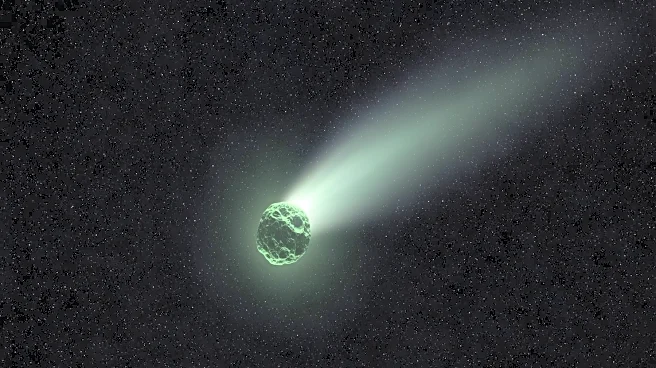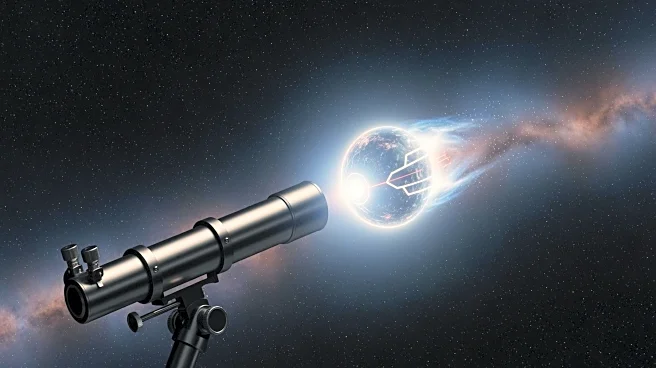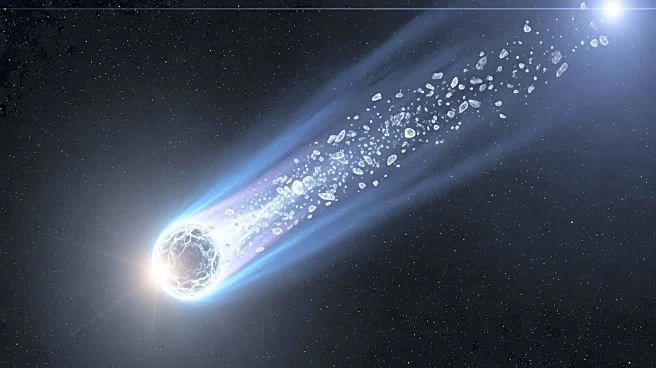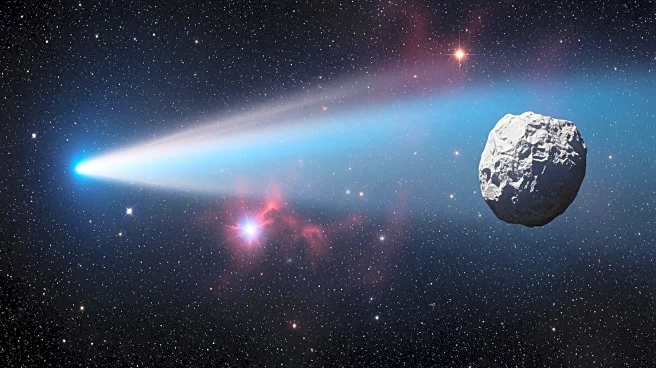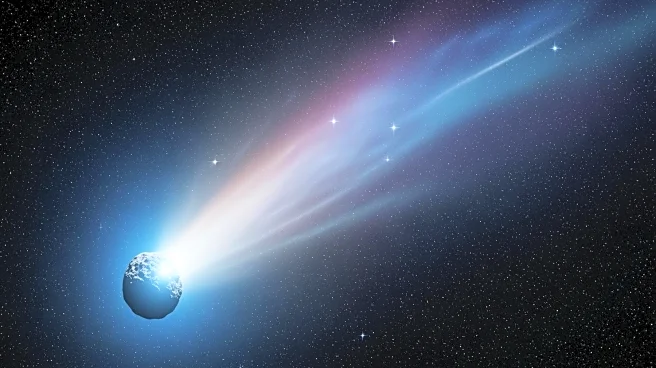What's Happening?
Recent images of the interstellar object 3I/ATLAS, captured by the Lowell Discovery Telescope in Arizona, reveal a faint haze surrounding the object but no cometary tail. The images were taken when 3I/ATLAS was
1.38 astronomical units from the Sun and 2.23 astronomical units from Earth. Harvard astrophysicist Avi Loeb discussed these findings in a Medium blog post, noting the absence of a dust tail, which typically forms due to intense evaporation as a comet approaches perihelion. Loeb highlighted that the object should have lost over 13% of its mass during perihelion if it were a natural comet, resulting in a massive coma of dust and gas. However, the current perspective may be unfavorable for observing the tail, as the object is only 13 degrees away from the Sun in the sky.
Why It's Important?
The observations of 3I/ATLAS are significant as they challenge conventional understanding of cometary behavior. The absence of a cometary tail raises questions about the object's nature and origin, potentially impacting theories about interstellar objects. This could influence future research and exploration strategies by NASA and other space agencies. The findings also contribute to ongoing debates within the scientific community regarding the classification and characteristics of such celestial bodies, which may have implications for understanding the solar system's formation and the presence of similar objects.
What's Next?
As the angle between 3I/ATLAS and the Sun increases in the coming weeks, terrestrial observers will have better opportunities to determine whether the object develops a cometary tail post-perihelion. Researchers are also anticipating the release of high-resolution HiRISE images from NASA, which were obtained in early October 2025. These images may provide further insights into the object's composition and behavior, potentially confirming or refuting current hypotheses about its nature.
Beyond the Headlines
The study of 3I/ATLAS may have broader implications for understanding interstellar objects and their potential impact on Earth. The absence of a cometary tail could suggest alternative explanations for the object's behavior, such as non-gravitational forces or unique material properties. This could lead to new models for predicting the trajectories and interactions of similar objects, enhancing preparedness for potential future encounters.




